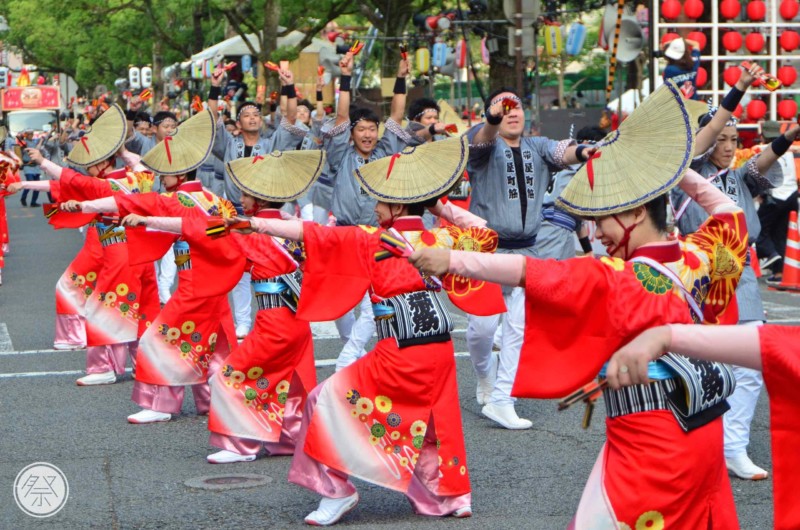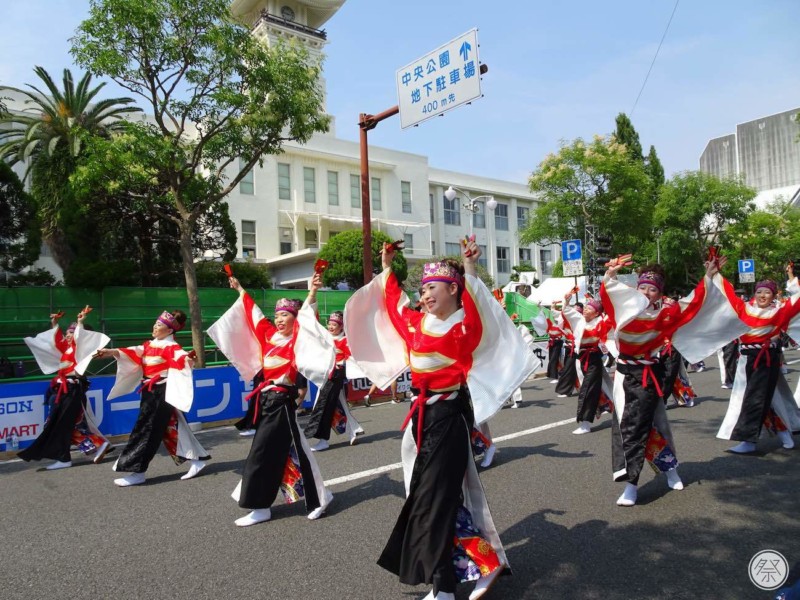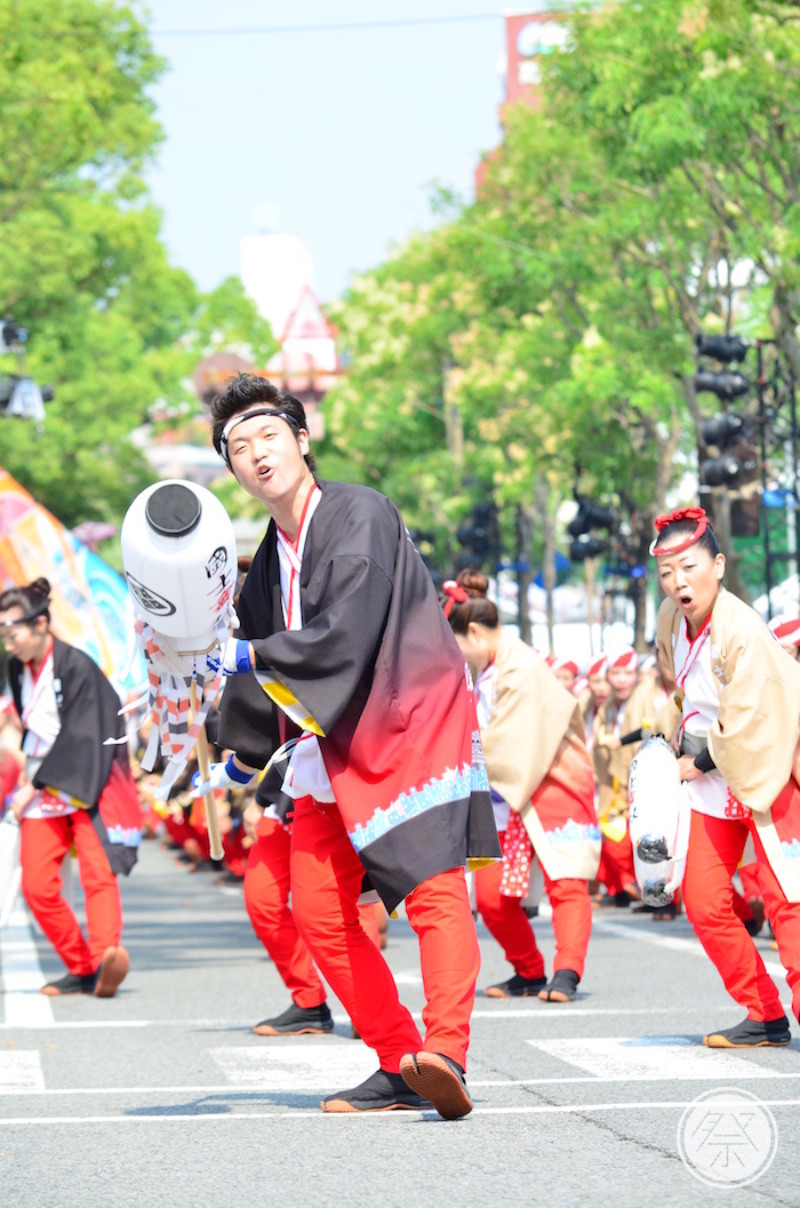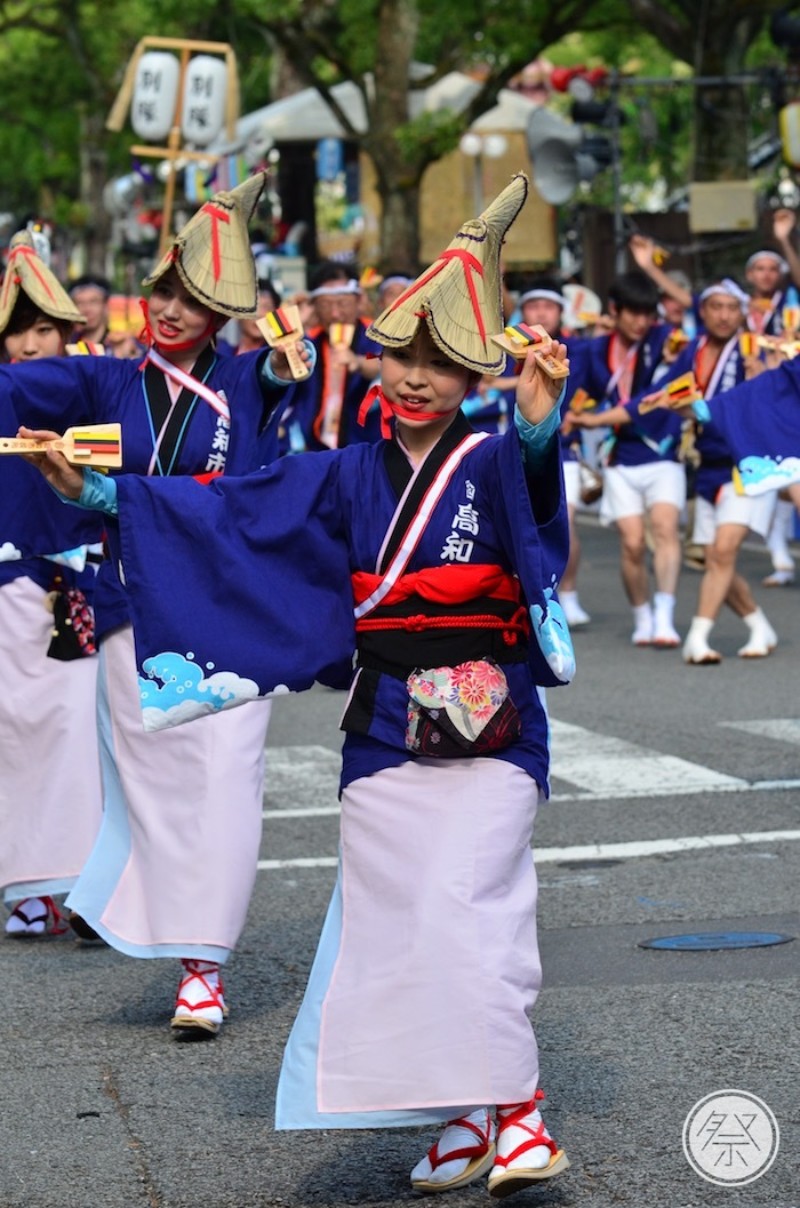The Yosakoi Matsuri is a competition held over four days, August 9th to the 12th. The main festival is held on the 10th and 11th, preceded by the Eve festival on the 9th and a closing festival on the 12th. In 16 different venues (nine paid viewing locations and seven free viewing stages) over 200 teams, approx. 20,000 people gather to dance in an elaborate frenzy along side the heavily decorated local floats as they cruise through the streets of town to the unique rhythms of the Naruko (local hand instrument). It was started in 1954 as a way to recover the economy and revitalize the local regions during the post-war years. Not only do Yosakoi fans gather from all over the country to take part in the festival, they have taken the lively dance back home with them and have helped spread the attractiveness of Yosakoi across the land for all to know.
The Yosakoi ceases to disappoint as it has come to adapt not only traditional music but rock, salsa-like rhythms and even old folk dance.



As long as the dance is based on the folk "Yosakoi-bushi" song, and performers are proceeding forward with Naruko (local hand instrument) in both hands, it is considered "Yosakoi". It is a dance that transcends genre for all to enjoy.
Each team contains of a continuous line of roughly 100 people, an astonishing sight to see.


Individuality in this festival is expressed through the costumes, naruko, and the floats known as Jikatasha. There are many kinds of costumes, from traditional Happi jackets and kimonos, to more modern clothes. The original colors of naruko are scarlet, yellow and black, but there are many teams that design their own original naruko. The Jikatasha floats are movable stages and the source of broadcast. Neon lights come on at night, and you might even see the use of dry ice as a most elaborate and mystical world is unveiled. Enjoy the many subtle differences.
Medals shine as they hang from the necks of winning contestants. Dozens of judges who have witnessed generation after generation of Yosakoi performances present the winning medals to those who stole the audience with outstanding dance and brilliant smiles. Out of the many medals that are awarded, the scarlet colored "Hana (flower) Medal" is the most prestigious one of all. Enjoy the subtle differences in all the performances as you search for the dancer with the Hana Medal.
Please take precautions against overheating as it can get very hot while viewing the festival.
Access to Kochi City
[Nearest Station]
JR Kochi Station
Venue
There are 16 different locations throughout the City of Kochi